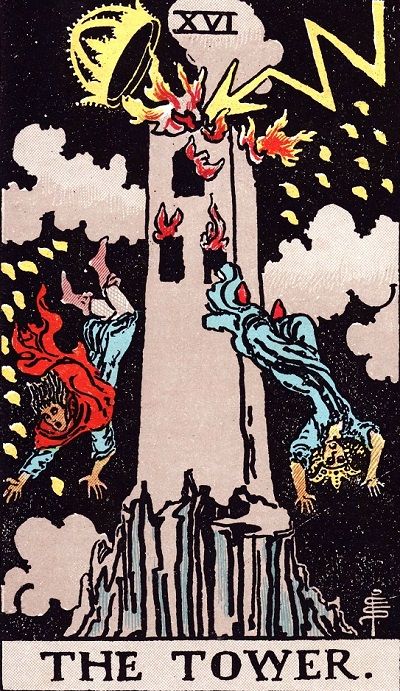Earlier in the year, I was lucky enough to visit Yosemite National Park in search of socially-distant open spaces. I was also unlucky enough to visit when it was covered in wildfire smoke that made everything look like Silent Hill, and eventually forced the park to evacuate everyone due to the health risk. Before the rangers called for the evacuation, I briefly sought some refuge from the smoke in its historic Ahwahnee Hotel.
 |
| You are now entering Silent Hill and/or The Twilight Zone. Yeah, that's all extremely thick wildfire smoke. |
 |
| As terrible as the smoke was, I admit the spooky atmosphere looks cool in photos. |
I knew little about it before going in; I just knew that it was a historic hotel built in 1927, and that I really enjoy historic hotel architecture (as is probably apparent by this blog). Upon entering, though, I immediately recognized the place. "Wait a second," I thought, "This is the Overlook Hotel from The Shining!"
 |
| The entry lobby; the bar is to the left and the check-in desk across from this view |
 |
| Descriptive plaque near the check-in desk |
 |
| Check-in desk; the gift shop entrance was just to the right |
 |
| The Grand Lounge. Note the smoke managing to get into the hotel lobby. |
 |
| Stained glass windows in the Grand Lounge. Also notice the glass cases displaying fancy pottery. |
As it turns out, I was close to correct. The Stanley Kubrick film wasn't actually filmed at The Ahwahnee, but the sets were built based on the real hotel's architecture. This shot might seem especially familiar to Kubrick fans:
 |
| *Insert elevator "ding" sound here* |
Oddly enough, The Ahwahnee also inspired a very different hotel: Disney's Grand Californian. This is most apparent in the exterior of the building, as well as how similar The Ahwahnee's grand dining room is to the Grand Californian's lobby.
 |
| The dining room is both grand and Californian |
Now, of course, this is a Tower of Terror blog. You know where this is going. While Florida's Tower very directly copied the Biltmore Hotel's lobby, its Californian and Parisian counterparts' inspirations have required a bit more digging. Thus far, I haven't found any references so direct as Biltmore is to Florida; instead, the DCA/Paris design seems to copy the general "feel" of late 1920s Californian luxury hotel architecture. Much like the Norconian, The Ahwahnee certainly seems to have that distinct combination of Art Deco and Native American/"Southwest" style, as well as the crossbeamed ceiling of the DCA/Paris lobby.
The similarities are most apparent in the large public spaces of the Ahwahnee; the Grand Lounge feels very much like the DCA Tower lobby, including the furniture and area rug choices, the large fireplaces, and those display cases with pottery I mentioned earlier.
 |
| Grand fireplace across from the elevators |
 |
| One of the Grand Lounge seating areas, in front of another fireplace |
 |
| A look at that fireplace--note the tapestry above, and how it's flanked by two lamp stands |
 |
| Another seating area, in front of a different fireplace on the other end of the lounge |
 |
| Yet another grand fireplace. Note that this one is so large it has what appear to be seats built into it. |
 |
| That ceiling! |
 |
| Another look at that fancy pottery display case and the stained glass windows |
The side rooms branching off from the Grand Lounge also felt vaguely like Tower's libraries. There were three branches, with the Solarium forward and behind one of the giant fireplaces, the Mural Room to the right (if one was facing the Solarium), and the Winter Club Room to the left.
 |
| The Solarium; across from this view was just a full wall of bay windows. There was no view that day, just a thick gray wall of smoke. |
 |
| Entering the Mural Room |
 |
| The mural |
 |
| Mural Room Fireplace |
 |
| Mural Room window, with wildfire smoke outside |
 |
| Mural Room exit |
 |
| Winter Club Room entrance |
 |
| Winter Club Room fireplace and memorabilia displays |
 |
| Winter Club Room window and more display cases |
I couldn't help but notice that, like the different incarnations of the Hollywood Tower Hotel, the Ahwanee also has its own unique symbol/logo that features on everything from the framed menu in front of the dining room to the panel of the elevator.
 |
| Logo on elevator panel |
 |
| While we're here, here's the rest of the elevator. It even made that classic "ding" sound like Tower's elevators! |
 |
| That beautiful stained glass ceiling! |
The exit near the parking lot even had display windows of souvenirs with the logo in the background... very reminiscent of DCA and Paris' exit area!
One of the more common ways I've heard non-Disney-fans try to describe Tower of Terror is "The Shining, but as a ride." Presumably, this is just because The Shining is one of the most popular examples of a haunted hotel in current popular culture. However, as it turns out, The Shining really does have a close connection to DCA--and not necessarily the Tower! Indeed, it's California Adventure's luxury hotel that is instead heavily based on the same hotel as The Overlook. I don't believe that the Ahwanhee is quite close enough to DCA/Paris Tower to say it was the direct base for the design the way The Biltmore was to Florida's, but the connection is still apparent as well. It certainly shows how expertly the Tower's designers properly captured the exact style and feel of a late 1920s luxury resort.





























